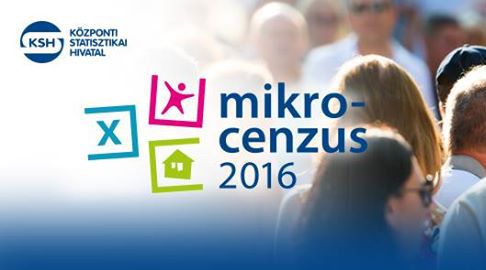The Hungarian Central Statistical Office (KSH) published figures from a micro-census conducted in 2016 that present an alarming reality: there are only 1.4 million people in the country under 15 years of age and only 6.6 million active, working age adults. To place this into context: in 1960, there were 2.5 million Hungarians under the age of 15. This large number of young Hungarians was due at least in part to pronatalist politics between 1949 and 1953, including a ban on abortion, as well as a tax on childless parents imposed by Minister of Health Anna Ratkó. It is, however, also argued that the end of Stalinist repression in Hungary and a degree of liberalization contributed to the increased birth rate. A decade and a half earlier, at the end of World War II, there were 2.3 million Hungarians under 15 years of age.
There has been a steady decline in working age adult Hungarians and a growth in the number of retirees. While in 2001, there were 7 million working age Hungarians, this has now dipped to 6.6 million. Those over 65 years of age now number 1.8 million.
The 2016 micro-census also provides data on citizenship in Hungary. Hungary’s population is now 9,8 million. Nationally, the number of residents who were born abroad stands at 383,495, or 3.8% of Hungary’s total population. In terms of immigration and the origins of foreign citizens residing in Hungary, relatively small numbers come from outside of Europe. The break-down is as follows:
- China: 13,279
- Vietnam: 4,512
- Other Asian countries: 15,235
- African countries: 4,472
- United States: 3,523
- The Americas (except the U.S.): 2,581
- Australia and Oceania: 541
- Stateless: 1,014
Compared to figures from 2011, the number of Asian foreign citizens in Hungary has increased over five years from 22,034 to 32,926, due mainly to a sharp rise in immigration from China and Vietnam. The Orbán government has been actively promoting immigration from these areas, particularly from wealthier individuals who could buy government bonds. The number of immigrants from Africa also grew from 2,853 in 2011 to 4,472 in 2016. The number of stateless arrivals increased from just 113 in 2011 to 1,014 in 2016.
When it comes to immigration from European countries outside the European Union, the countries producing the largest number of arrivals are (the figures below show the number of nationals currently in Hungary from the respective countries):
- Ukraine: 4,966
- Russia: 4,408
- Serbia: 3,038
In the case of Ukraine and Serbia, many of the arrivals are undoubtedly ethnic Hungarians. Although it should also be noted that Hungary has been trying to attract much needed skilled labour from Ukraine, regardless of ethnicity. That said, the number of arrivals from all of these non-EU European countries has declined since 2011.
The micro-census also provides data on the number of non-European foreign citizens residing in Hungary who have obtained Hungarian citizenship. This number is actually quite small and the break-down is as follows, going back to before 1990:
- Asia: 4,662
- The Americas: 3,458
- Africa: 1,565
- Australia and Oceania: 400
The largest demographic of foreign born people residing in Hungary with full Hungarian citizenship are nationals from Romania, primarily ethnic Hungarians. This number stands at 135,572.
The 2016 Census also provides data on the average age when Hungarian women give birth to their first child. Nationally the average age, when we look at all women alive today, stands at 24 years, but there are variances based on region. For instance, in Budapest the average age is 26, while in eastern Hungary it is 23. There are also many more large families with three or more children in rural eastern and northeastern Hungary than there are in Budapest.
In terms of the highest level of education attained, there are 2 million Hungarians (1,987,418) who only have a Grade 8 education. There are 327,311 Hungarians who have completed at most Grade 3 and there are 83,284 who have not even completed one year of elementary school. A total of 1,715,661 Hungarians have completed post-secondary studies, either at the college or university level.
The 2016 micro-census is a demographic snapshot of Hungary today. It shows that a declining and ageing population, felt most acutely in small town Hungary, remains a concern.




